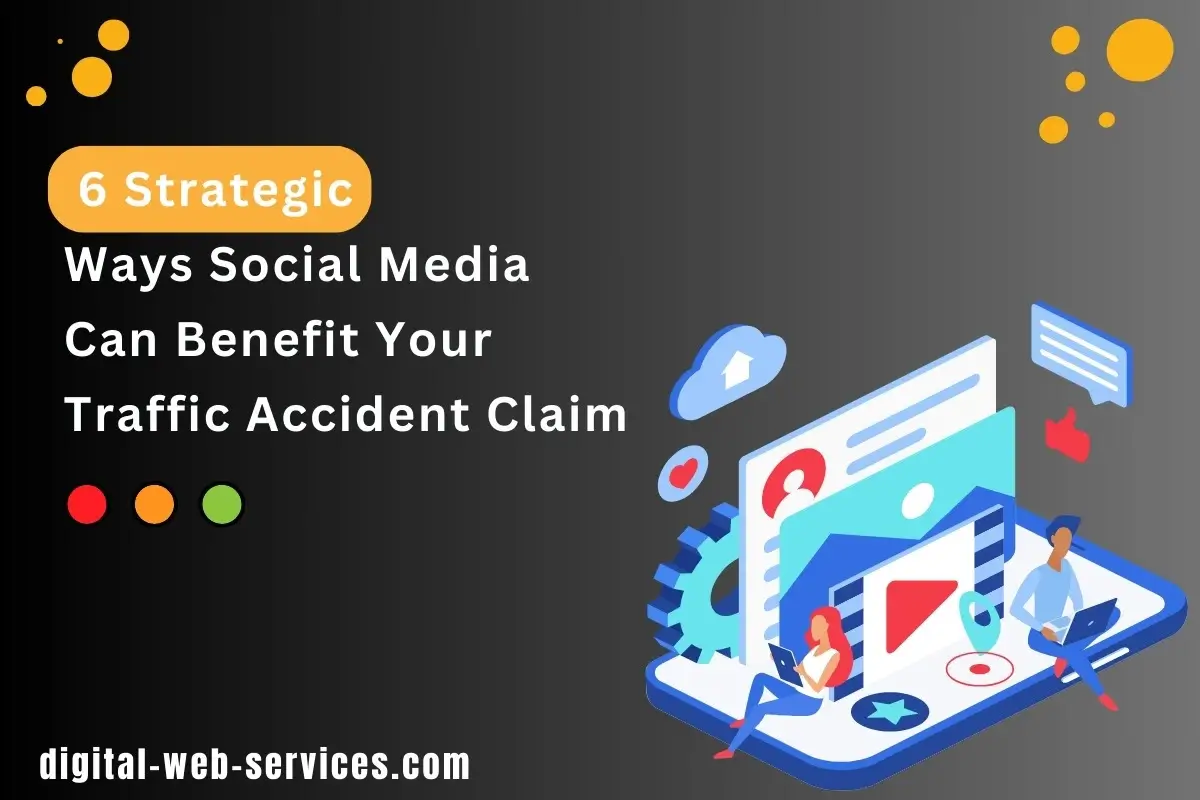
Social media users in the United States are projected to increase by a total of 22 million from 2024 to 2029. In today’s digital age, social media transcends selfies and memes, becoming a powerful tool that can surprisingly transform lives. Imagine a single post or tweet being crucial for securing justice after a traffic accident.
In this article, we’ll discuss how to leverage social networks effectively, offering innovative strategies to strengthen your case and secure deserved compensation.
Documenting the Accident Scene
Forbes states documenting the accident scene is crucial, especially if the accident happened at an intersection. Be sure to capture any street signs or traffic signals to provide context for the crash.
Photograph any skid or gouge marks on the pavement or dirt, as they can provide insights into the accident’s dynamics. Document the car’s interior damage, including deployed airbags and shattered glass, to create a comprehensive incident record.
Post or privately store these visual records on platforms like Facebook or Instagram to ensure they are timestamped and easily accessible. Prompt and detailed documentation creates a reliable narrative for reference throughout the claim process.
Providing Real-Time Updates
Social media is a powerful tool for providing real-time updates after a traffic accident, boosting the credibility of your claim. Post live updates or stories on Facebook, Instagram, or Twitter to document the scene, capture witness statements, and record reactions. These real-time posts serve as timestamped evidence, illustrating the severity and circumstances of the accident as it happens.
Regularly updating your injuries, treatments, and recovery progress can substantiate your claim by showing the ongoing impact on your life. These updates not only keep your network informed but also create a chronological narrative that can be invaluable during legal proceedings.
By using social media for real-time documentation, you can significantly strengthen your case and enhance your chances of receiving fair compensation.
Establishing a Timeline of Events
Start by sharing updates or check-ins before the accident to establish your whereabouts and actions. If feasible, post real-time updates or photos during the accident to offer immediate context. Afterward, continue to post about medical appointments, vehicle repairs, and any post-accident challenges.
SMI Aware states that forensic analysis of social media can uncover identifying details and motives, aiding in solving cases, prosecuting offenders, and defending the innocent. This comprehensive approach ensures all relevant information is considered, enhancing the investigation’s accuracy and integrity.
This timeline offers a clear sequence of events and highlights the accident’s impact on your daily life. Leveraging social media to create this timeline provides compelling evidence, strengthening your case and improving the likelihood of a favorable outcome.
Finding and Researching a Local Lawyer
Join local community groups or forums where members often share attorney recommendations and experiences. Facebook business pages and Instagram profiles can offer insights into their approach and success stories.
Let’s consider a tragic accident in south St. Louis that claimed one life, KSDK reports. A speeding Pontiac G6 driven by 35-year-old Brant Renfro collided with a semi-truck on the 18th of January, 2024 afternoon. Renfro was pronounced dead at the scene, while the semi-truck driver sustained non-life-threatening injuries.
By utilizing social media to find and research a local truck accident lawyer, you gain insights from real experiences and recommendations. In the above case, searching for a local St. Louis truck accident lawyer can be your best bet. A local lawyer specializes in representing individuals involved in truck-related accidents within the St. Louis area.
Engage with legal professionals’ content to assess their knowledge and communication style. Initiating contact through direct messaging or comments can gauge their responsiveness. According to TorHoerman Law, you should seek an attorney with the experience, resources, and commitment needed to win your case. This guarantees that you get the compensation you are entitled to.
These legal professionals are skilled in handling truck accident cases, dealing with insurance companies, understanding regulations, and advocating for fair compensation.
Gathering Witness Testimonials
Social media facilitates gathering witness testimonials, significantly strengthening your traffic accident claim. Post-accident, connect with witnesses or bystanders who observed the incident. Platforms like Facebook or Twitter serve as channels to reach witnesses. You can post requests for witnesses to come forward or join local community groups where experiences might be shared.
Once contact is established, ask witnesses to provide their accounts through direct messages or comments. Seek permission to use their testimonials as evidence. These firsthand accounts corroborate your version of events, enhancing your claim credibility. Leveraging social media for witness statements strengthens your case and improves the likelihood of a successful outcome.
Demonstrating Impact and Losses
Social media vividly portrays accident impact and losses, providing compelling evidence for your claim. Share updates, photos, and videos depicting the physical, emotional, and financial toll of the accident. Post about medical appointments, therapy sessions, or treatments to highlight injuries and recovery progress. Document vehicle damage, property loss, and challenges faced after the accident.
B2BNN states that sharing accident details or footage online can have legal implications, potentially becoming evidence in claims, lawsuits, or investigations. Law enforcement agencies and insurance companies often monitor social media platforms during traffic accident cases. This helps protect rights and ensures accurate representation of impact and losses in legal proceedings.
Use Facebook or Instagram to share how the accident affects your life, detailing missed workdays, canceled plans, or emotional distress. Transparently showcasing your losses and hardships through social media provides tangible evidence, enhancing the likelihood of fair compensation and justice.
Frequently Asked Questions
What information should I avoid sharing on social media after an accident?
After an accident, avoid discussing legal matters or settlements with anyone on social media to prevent complications. Also, be cautious not to share content that contradicts your claim or could be misunderstood by insurance adjusters or opposing parties.
How can social media gather witness testimonials for my claim?
Social media facilitates gathering witness testimonials by contacting potential witnesses on platforms like Facebook or Twitter. Participating in local community groups or forums where members share experiences can aid in this.
How does social media aid in finding a local lawyer?
Social media helps find a local lawyer by allowing direct engagement. It also showcases expertise through client reviews and comments on platforms like Facebook and LinkedIn.
Conclusion
social media is pivotal for strengthening your traffic accident claim. Documenting the scene, gathering testimonials, and showcasing impact can bolster your case.
Leveraging platforms like Facebook, Instagram, and Twitter creates a compelling narrative backed by real-time evidence. With social media as your ally, navigate the claims process confidently, ensuring your voice is heard, and justice prevails.
Digital Web Services (DWS) is a leading IT company specializing in Software Development, Web Application Development, Website Designing, and Digital Marketing. Here are providing all kinds of services and solutions for the digital transformation of any business and website.










